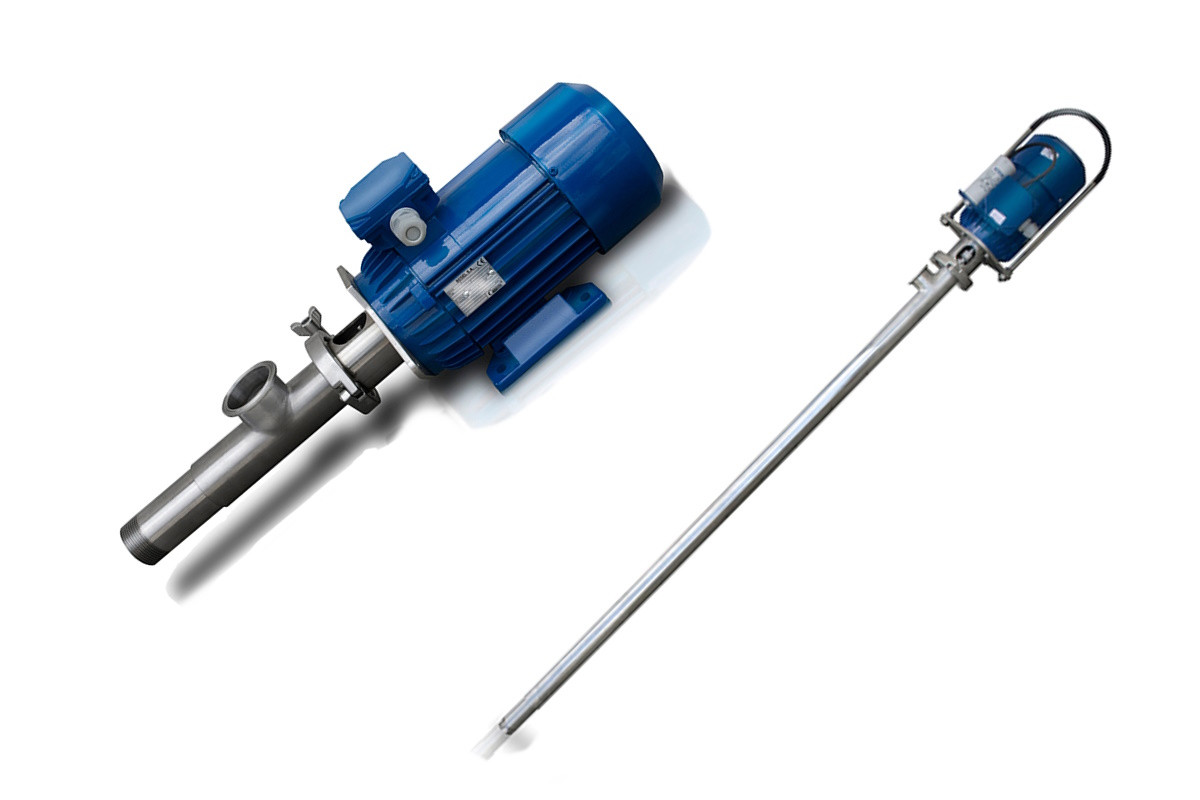July 12, 2023

When it comes to selecting a pump to transfer your products, there are a few things to consider. The most important factor in deciding on a type of pump is the viscosity of the liquid being transferred. In addition, a desired flow rate and the distance that the liquid must travel should also be taken into account.
There are many different designs and technologies across the pump industry optimized for various uses. Centrifugal pumps, screw pumps, piston pumps, and bin/drum unloaders are among the most widely used.
Centrifugal Pumps
Centrifugal pumps are very likely to be found where low-viscosity liquids are being pumped at different flow rates. These pumps utilize an impeller to move the fluid and are typically powered by electric or gas motors. Centrifugal pumps fall short when dealing with high-viscosity fluids due to less pumping pressure. There are some centrifugal slurry pumps designed for transferring liquids with a high concentration of particles, but the flow rate can still be slowed by viscosity.
Screw Pumps

When dealing with high-viscosity liquids, screw pumps are the best option. This type of product pump is growing in popularity since it handles thick fluids like oils and greases so well. Some operators will add an extra step to heat or mix high-viscosity products to allow weaker centrifugal pumps to handle them. Screw pumps avoid this by creating a sealed cavity that moves the fluid with a constant flow rate that is unaffected by viscosity or pressure. In addition to better flow rates, screw pumps also offer low pulsation, low vibration, and quiet operation. Read more about screw pumps available for purchase here.
Piston Pumps
Piston pumps, in addition to screw pumps, are a type of positive displacement pump. Like screw pumps, piston pumps create expanding and contracting cavities to move fluids. With the piston/reciprocating design, suction is created when a piston is pushed in and out of the liquid. The direction of flow is controlled by valves within the pump. The reciprocation of these pumps causes pulsation at consistent intervals.
Diaphragm Pumps
Diaphragm or double diaphragm pumps are another style of positive displacement pumps. These pumps are powered by compressed air and operate with diaphragms that reciprocate back and forth. While one chamber is being filled, the other is discharging the fluid. Ball valves are used to control flow direction, similar to piston pumps. The diaphragms in these pumps can be made from various materials depending on the chemical compatibility required. Double diaphragm pumps are able to transfer more viscous fluids. This style of pump is commonly found in the food and beverage industry where various regulations and certifications must be met.
Bin & Drum Unloaders
Finally, bin and drum unloaders use one of the pump styles mentioned above in combination with a pump ram, follower plate, and inflatable seal. The combination of these features allows operators to quickly empty an entire bin, pail, or drum with almost zero waste and no contamination. As the product is pumped out of the container, the follower plate and seal travel down with the level of liquid, cleaning the sides of the container. These pumps are commonly found in the food and beverage industry and pharmaceutical industry due to their cleanliness.
Feel free to reach out and contact us with any questions.

 USA Sales & Service
USA Sales & Service

